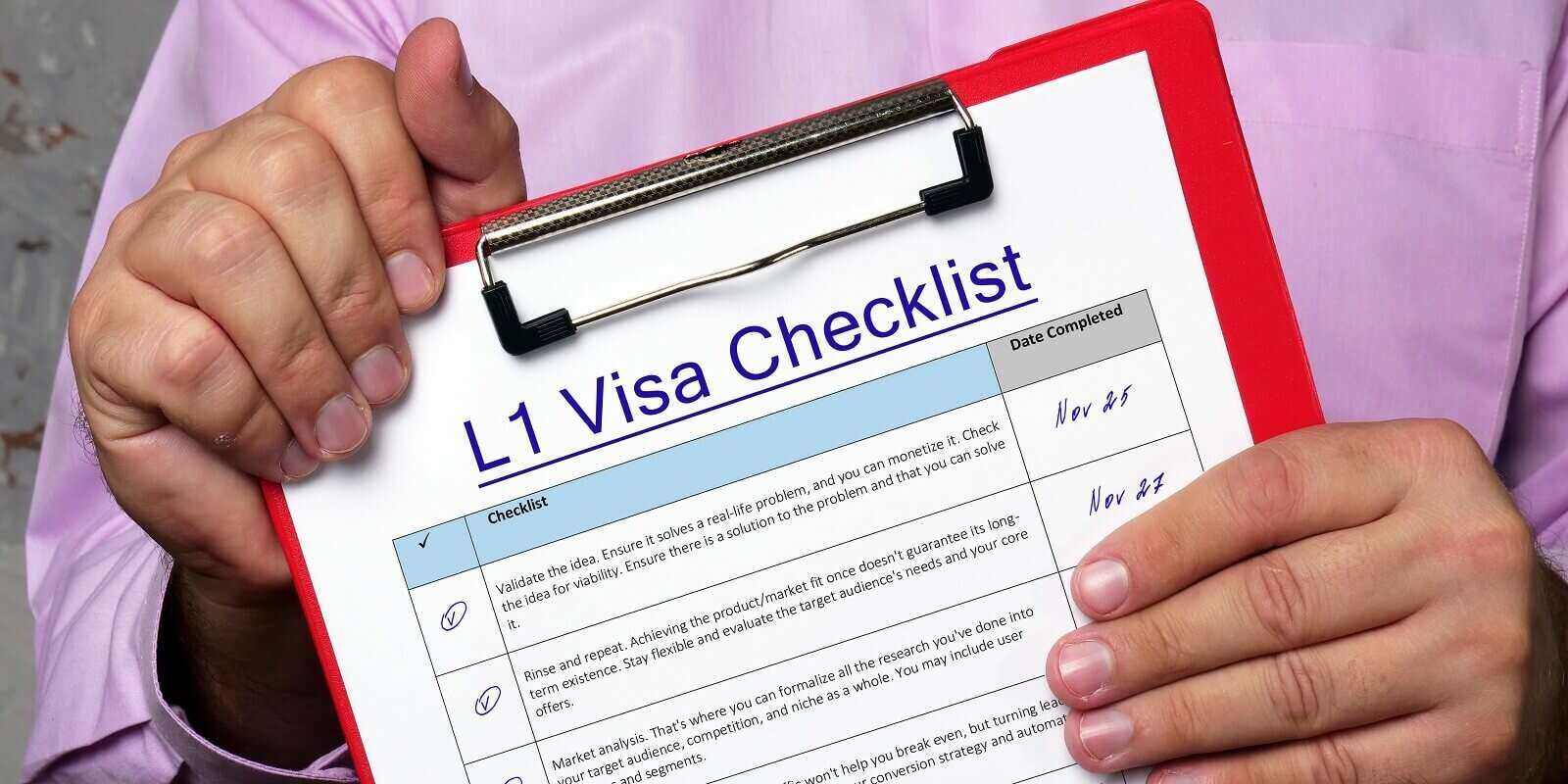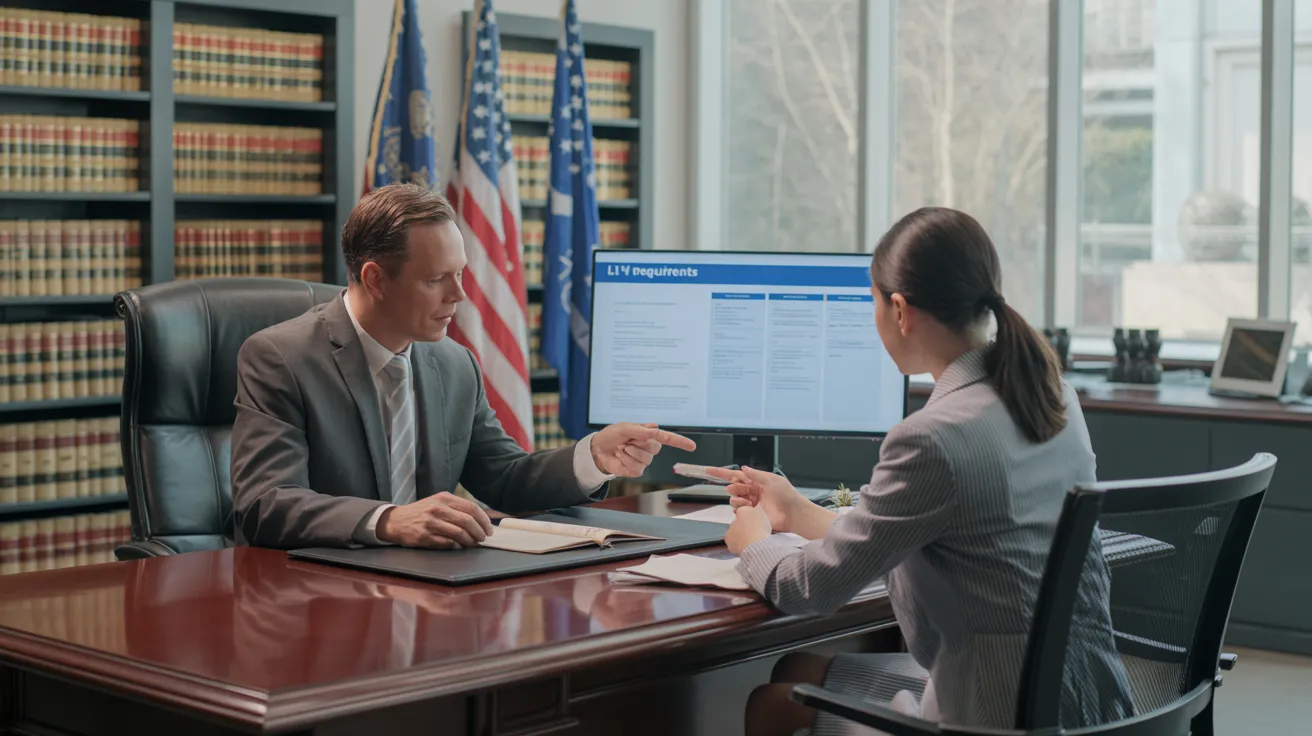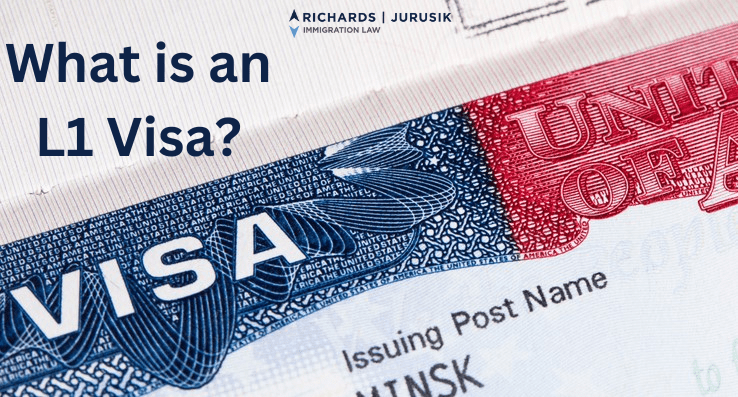Unlocking Opportunities: A Comprehensive Guide to the L1 Visa Process
The L1 visa process provides a crucial pathway for international firms looking for to move vital staff members throughout boundaries. Recognizing the subtleties of qualification standards, the distinctions between L-1A and L-1B visas, and the complexities of the application procedure can considerably affect an applicant's success. Navigating this complex landscape is not without its obstacles, and careful attention to documentation and employer sponsorship is vital. As we check out the essential components of this procedure, the methods for getting over prospective obstacles will come to be obvious, exposing exactly how educated prep work can open up a globe of chances.
Comprehending the L1 Visa
Comprehending the L1 visa entails acknowledging its value as a vital device for multinational companies looking for to move experienced employees in between international workplaces. This non-immigrant visa classification facilitates the activity of executives, supervisors, and specialized understanding employees to the United States, consequently allowing organizations to preserve functional continuity and harness international skill efficiently. The L1 visa is separated into two primary categories: L-1A for managers and executives, and L-1B for staff members having specialized knowledge.The L1 visa offers a vital function in improving a business's affordable edge in the international market - L1 Visa Requirements. By enabling business to transfer their key workers, businesses can ensure that essential projects are taken care of by certified individuals that are currently acquainted with the business's culture and functional procedures. This inner transfer system not just fosters expertise sharing but also advertises technology and cooperation across borders.Moreover, the L1 visa is commonly preferred for its relatively straightforward application procedure contrasted to other visa categories, as it enables dual intent, permitting holders to pursue long-term residency while on a short-lived job visa. This attribute makes the L1 visa particularly appealing for both companies and employees, as it improves the pathway for proficient professionals to establish long-lasting residency in the United States
Qualification Standards
Eligibility for the L1 visa hinges on several essential standards that ensure both the employee and the employer meet specific qualifications. This non-immigrant visa is developed for international firms to transfer employees from foreign offices to U.S. counterparts.Firstly, the company needs to be a certifying company, which includes a parent firm, branch, affiliate, or subsidiary of an U.S. business. The company should have been doing business for at least one year both in the united state and abroad. This ensures that the business has sufficient functional stability and a legit presence.Secondly, the staff member should hold a supervisory, executive, or specialized expertise setting. For L1A visas, the candidate should show supervisory or executive credentials, while L1B visas concentrate on specialized understanding associated to the organization's products, solutions, or procedures. Furthermore, the worker should have worked for the foreign entity for at the very least one constant year within the last 3 years before their application.Lastly, the employee's function in the united state need to line up with their previous position, making certain that their skills and experience are leveraged for the company's advantage.
Types of L1 Visas
The L1 visa category comprises 2 key types developed to help with the transfer of staff members within international business: the L1A visa for managers and execs, and the L1B visa for staff members with specialized understanding. Each kind offers distinct purposes and has particular eligibility criteria.The L1A visa is customized for people who hold managerial or executive settings within a company. This visa makes it possible for top-level workers to move to an U.S. branch, subsidiary, or affiliate of the exact same company. Applicants for the L1A visa have to demonstrate that they have actually been utilized in a supervisory or executive capacity for at least one continuous year within the past three years prior to their application. In addition, this visa offers a longer period of stay, at first approved for 3 years, with the possibility of extensions for approximately 7 years.In contrast, the L1B visa is planned for professionals with specialized understanding pertaining to the company's items, solutions, or procedures. To certify, candidates must prove that their knowledge is important to the company which they have actually benefited a minimum of one constant year within the last three years in a function that needed this specialized expertise. The L1B visa is at first approved for three years, with expansions offered for as much as five years.Both visa types are vital for business looking for to boost their global operations by leveraging proficient workers, thus promoting advancement and efficiency within the united state market.
Application Process
Guiding with the L1 copyright procedure involves a number of important steps that have to be thoroughly followed to assure an effective outcome. The process begins with the united state company, who must first develop qualification by showing a certifying connection with the foreign entity and confirming that the employee satisfies the particular needs for the L1 visa classification being sought.Once eligibility is validated, the employer launches the process by submitting Type I-129, the Application for a Nonimmigrant Employee, with the U.S. Citizenship and Immigration Services (USCIS) This kind needs to be gone along with by an in-depth summary of the job obligations to be carried out, the organizational framework of both the united state and international entities, and the worker's qualifications. It's important to confirm that all info is precise and total, as omissions or inaccuracies can lead to delays or denials.Upon approval of the I-129 request, the following action entails the worker looking for the L1 visa at a united state consular office or consulate in their home nation. This phase requires the conclusion of Type DS-160, the Online Nonimmigrant copyright, and setting up an interview. Throughout the interview, the applicant must present proof sustaining their qualifications and the company's petition.After the visa is approved, the employee can enter the USA to operate in the designated role. In general, careful prep work and adherence per action of the application procedure are necessary for a successful L1 visa outcome.
Required Paperwork

Necessary Forms Needed
Steering the L1 Visa procedure requires cautious interest to the vital forms and documents essential for a successful application. The key type required is the Form I-129, Petition for a Nonimmigrant Employee, which need to be completed and submitted by the U.S. company. This type details the details of the work offer and the certifications of the worker looking for the L1 Visa.Alongside Form I-129, the applicant will certainly require to full Kind I-539 if going along with household members are also applying for visas. Furthermore, the employer needs to provide evidence of the qualifying partnership between the U.S. entity and the international entity, commonly requiring the entry of business files such as write-ups of consolidation or financial statements.Moreover, it is vital to consist of the L Classification Supplement to Kind I-129, which specifies the type of L Visa being asked for-- either L-1A for supervisors and execs or L-1B for workers with specialized understanding. Candidates need to assure that all types are authorized and dated suitably, as incomplete submissions can lead to delays or rejections. Properly setting up these crucial types lays the foundation for a smoother L1 copyright procedure.

Supporting Evidence Requirements
Sustaining documents is crucial for an effective L1 copyright, as it confirms the cases made in the petition. Applicants have to give a variety of records to show eligibility for the visa, which is categorized into two primary kinds: proof of the qualifying relationship between the U.S. and international entities and evidence of the applicant's qualifications.To establish the relationship, candidates must submit documentation such as company business charts, financial declarations, and evidence of possession. These files verify that the international company has a qualifying partnership with the united state company, whether as a moms and dad company, subsidiary, branch, or affiliate.For the candidate's certifications, important documents consist of an in-depth work letter from the foreign company, laying out the applicant's job title, duties, and period of work. Additionally, instructional qualifications, such as degrees and diplomas, ought to be given to prove the applicant's knowledge in the relevant area.
Employer Sponsorship Documents

Common Obstacles
Maneuvering the L1 visa process offers a number of common difficulties that candidates must know. Trick issues often include rigid documentation requirements, prospective delays in handling times, and the requirement for strict legal compliance. Recognizing these obstacles can assist candidates better L1 Visa process prepare and alleviate threats throughout their copyright journey.
Paperwork Demands
The L1 copyright procedure frequently offers significant difficulties associated to paperwork needs. Candidates should offer considerable documentation to establish qualification, which can bring about confusion and prospective hold-ups. Trick documents include proof of a qualifying connection between the U.S. and foreign company, evidence of the applicant's work background, and comprehensive information regarding the task duty in the U.S.One typical difficulty is gathering adequate evidence to demonstrate the nature of the qualifying connection. Firms frequently have a hard time to present clear organizational graphes or economic declarations that highlight the connection between the entities. On top of that, ensuring that letters of support from employers accurately reflect the applicant's task responsibilities and qualifications is important, as unclear descriptions can result in denials.Another issue arises from the need for detailed job descriptions that align with the L1 visa categories. Candidates need to express not only their present function however likewise their supervisory or specific knowledge obligations clearly. This necessitates a detailed understanding of both the applicant's position and the governing language made use of in L1 applications.
Processing Time Hold-ups
Experiencing delays in handling times is a typical challenge encountered by L1 visa candidates, frequently resulting in aggravation and unpredictability. A number of variables add to these delays, including high application quantities, enhanced scrutiny of applications, and management backlogs within the united state Citizenship and Immigration Provider (USCIS) Applicants might discover that handling times can vary significantly relying on the solution center handling their application, as each facility has its own work and effectiveness levels. Additionally, the complexity of the candidate's instance, such as the demand for extensive paperwork or explanation, can additionally extend wait times.In some circumstances, concerns connected to the candidate's present immigration standing or previous visa history may also lead to additional delays, as USCIS may require additional review or details. It is important for prospects to continue to be positive during this period, maintaining open interaction with their employers and lawful reps to attend to any prospective concerns promptly.Understanding these processing time obstacles can assist L1 visa candidates prepare for possible hold-ups and minimize the influence on their change and career plans. Persistence and diligence are crucial virtues in maneuvering this elaborate process.
Lawful Compliance Issues
Numerous L1 visa applicants come across lawful compliance concerns that can complicate their trip towards obtaining the visa. Comprehending and adhering to the details policies established by the united state Citizenship and Immigration Provider (USCIS) is essential. Common difficulties include demonstrating the qualifying connection in between the international and united state employers, as well as showing that the applicant possesses the requisite customized expertise or managerial capacity.Additionally, applicants must supply thorough paperwork outlining their work obligations, company framework, and monetary viability of the U.S. entity. Inadequate or imprecise paperwork can bring about delays and even denials. Employers should also guarantee that they abide by labor regulations, consisting of wage and working condition criteria, which can impact visa eligibility.Another usual concern entails keeping conformity with the regards to the visa as soon as approved. Changes in work condition, task obligations, or business structure can necessitate amendments to the visa, which otherwise resolved without delay can bring about lawful problems. Consequently, staying educated about compliance demands and seeking legal counsel when required is essential to browse the intricacies of the L1 visa process efficiently.
Tips for Success
Success in the L1 copyright process frequently rests on precise prep work and attention to detail. To boost your opportunities of approval, start by thoroughly comprehending the eligibility needs for both the L1A and L1B visa categories. Examine whether your setting at the firm qualifies as managerial, executive, or specialized expertise, as this classification especially influences your application.Next, gather comprehensive documents that corroborates your claims. This consists of organizational graphes, in-depth work summaries, and evidence of the business's functional framework. Clear and succinct evidence of the certifying partnership between the U.S. entity and the international entity is important. Validate that all documents are organized realistically and provided in an expert way, as this shows your commitment and severity regarding the application.Engage the services of a skilled migration lawyer that concentrates on L1 visas. Their know-how can show invaluable, leading you via complex regulations and assuring that all documentation complies with present regulations. Furthermore, get ready for the meeting by exercising solution to common questions and being ready to review your role and contributions to the company comprehensive.
Frequently Asked Inquiries
Can Family Members Accompany the L1 Visa Holder?
Yes, member of the family of L1 visa holders, including spouses and single kids under 21, can accompany the primary visa owner. They may likewise use for L2 visas, which allow them to live in the United States.
For How Long Can I Stay on an L1 Visa?
The L1 visa permits first remains of approximately three years, with the possibility of expansion. L1A visa holders might stay for an optimum of seven years, while L1B visa owners can stay for five years.
Can L1 Visa Owners Get a Permit?
Yes, L1 visa owners can look for a permit. L1 Visa Requirements. They may pursue irreversible residency with employment-based categories, usually requiring sponsorship from their company, supplied they meet the essential certifications and documentation needs
What Occurs if My L1 copyright Is Rejected?
If your L1 copyright is rejected, you may receive a notification describing the reasons for rejection. You can look for to appeal the decision, reapply, or explore different visa choices based upon your scenarios.
Are There Any Kind Of Travel Constraints With an L1 Visa?
An L1 visa normally permits international travel; however, re-entry to the united state is contingent upon preserving valid status. Tourists should ensure conformity with visa conditions to prevent complications upon return
Final thought
